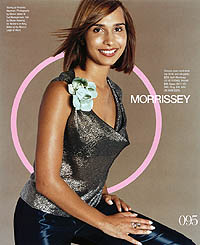|
The
Minister for Small Business in NSW, Sandra Nori, launched
the Indigenous Export Facilitation Project in 2000.
Workshops to help operators of Aboriginal businesses
develop the skills needed to succeed in business were
run by the Department of State and Regional Development
and Australian Business Ltd.
A
display of 25 businesses specialising in Aboriginal
and Torres Strait Islander arts and crafts was set up
at the 5th International Exhibition of Handicrafts in
Milan 2001 to generate interest in Australian artifacts.
Aboriginal
art centres promote independence
The
aim of Aboriginal art centres is to develop their
members' art in order to sustain, support and promote
their cultural heritage and improve the lifestyle
of local community members. A well-planned business
venture can provide the means by which creativity
can be extended through training and professional
development, promoted through exhibitions and sales
and appreciated by a wider audience. This can only
aid in elevating the status of Aboriginal people,
assist in raising self-esteem and pride in a community
and alleviate financial dependency on systems which
are inflexible and unsuitable. Financial and cultural
independence are aims of any Aboriginal organisation.
(Partos, 1998: 1)
Miss
Aboriginal Australia
While most people have heard of the Miss Australia
quest few would be aware of the Miss Aboriginal
Australian quest. Like other pageants Miss Aboriginal
Australia is selected on their involvement in community
work, not their beauty. Delvene Parkin won the title
in 1996. She was then approached by designer Robyn
Caughlan (who has designed a number of dresses for
Miss Universe contestants) to model and try out
for the chance to represent Australia at the Miss
Universe pageant.
In 1997 Delvene Parkin entered the contest to represent
Australia for the Miss World title. |

Delvene Parkin receiving the
Miss Aboriginal Australia crown for 1996.
The cloak was designed by Ron Gidgup.
|
|
Modelling
While Aboriginal and Torres Strait Islander Australian
textile designs are well known and many beautiful designs
have found their way onto the catwalks of Paris, Milan
and New York, the garments are rarely shown on an Aboriginal
model.
The
first Aboriginal model was Lois Briggs. She appeared
in shows to parade the 1961 Gold Medal Award winning
fashions for the then Australian Wool Bureau contest.
Lois had just graduated at 18 from modelling school
and planned a career as a model and possibly later moving
to television.
Vogue
covergirl
In a first for Vogue, Elaine George of Brisbane
became the cover girl for the September issue of Vogue
Australia 1993. As a result of this she headed off
for a career as an international model. She is now semi-retired
and married with two children. Elaine was discovered
as a 17 year old at Dreamworld, a Gold Coast
amusement park, by a freelance photographer.
In
2000 supermodel Naomi Campbell commented on the absence
of Aboriginal models from Australian catwalks. She observed
that not even designers who use Aboriginal inspired
designs seemed to use Aboriginal models.
The
reasons are varied:
- some
with potential, live in isolated communities
- the
lifestyle is far removed from their own lives
- there
is a lack of money to bridge the gap between assignments
- without
many role models few seem to be interested in being
models
- many
feel there is discrimination against Indigenous models.
Although
this has generally been the case, there are exceptions,
and attitudes are changing. Two names to keep an eye
out for are: Nakkari Fogarty-Smith and Kacey Elerdi.
Both were discovered by photographers in odd places,
a shopping mall and in Mt Isa.
Jinnali
Productions, a Queensland all-Aboriginal and Torres
Strait Islander production company produced an "Indigenous
swimsuit calendar" fir 2001. Their call for Aboriginal
and Torres Strait Islander models was met with great
interest Australia wide.

Delvene Parkin photographed by Barbara
Paulson for the Jinnali 2001 Calendar. Courtesy:
Liza Fraser-Gooda and Dina Paulson.
|
In
the May 2001 edition of Cosmopolitan six Aboriginal
and Torres Strait Islander models were featured wearing
fashion from six of Australia's hottest designers in
a feature titled Australian Style.

Delvene Parkin modelling a Peter
Morrissey design in Australian Style, Cosmopolitan
May 2001. Delvene wears cowl-neck top and silk pants.
Photo: Simon Upton. Courtesy: Simon Upton at Eye
Management. |
|